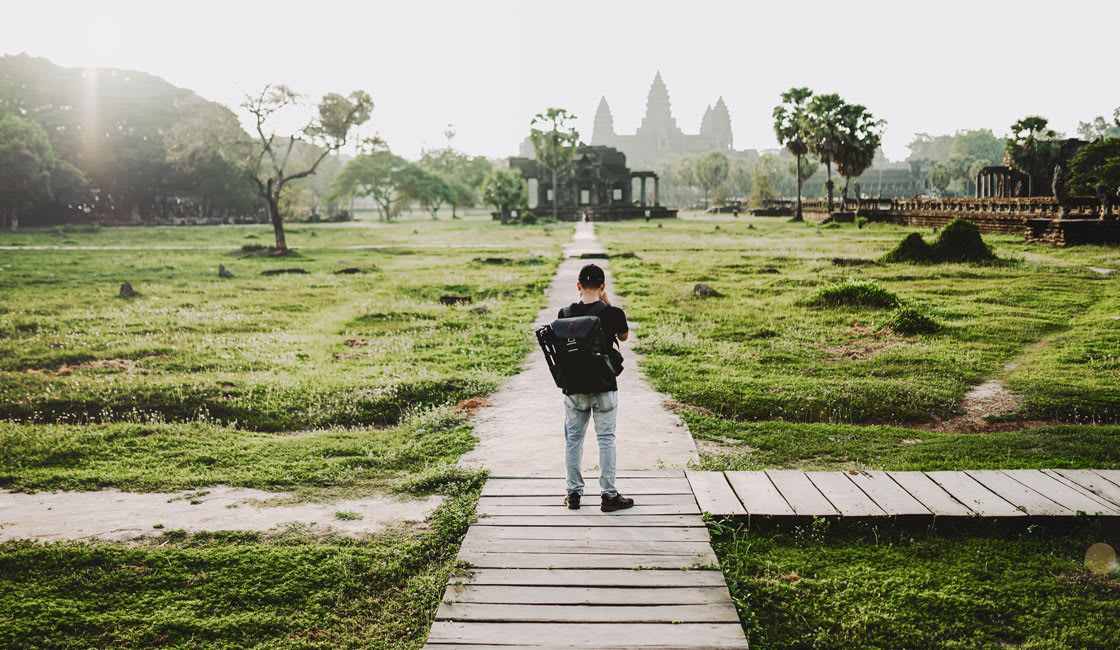
Situated between the Tonle Sap lake and the Kulen Mountains, amid dense rainforest and rice fields in the province of Siem Reap, the Angkor Archaeological complex consists of hundreds of awe-inspiring temple ruins from the Khmer Empire, which flourished from approximately the ninth century until the 15th century. At its peak, the city boasted a population of one million people, the largest preindustrial city in the world.
After the fall of the Khmer Empire, the Angkor temples were abandoned and reclaimed by the jungle for centuries. The temples range from stunning architectural marvels to rubble-filled edifices. However, many are characterized by endless corridors, secret passages, narrow chambers and intricate carvings.
For a complete experience, purchase a three-day ticket to give you enough time to visit the major temples as well as the many fantastic smaller sites. The ticket can be used over three non-consecutive days within a week, enabling you to explore as many temples as is physically possible.
Here is a guide to 11 of the best temples to see in Angkor Wat:
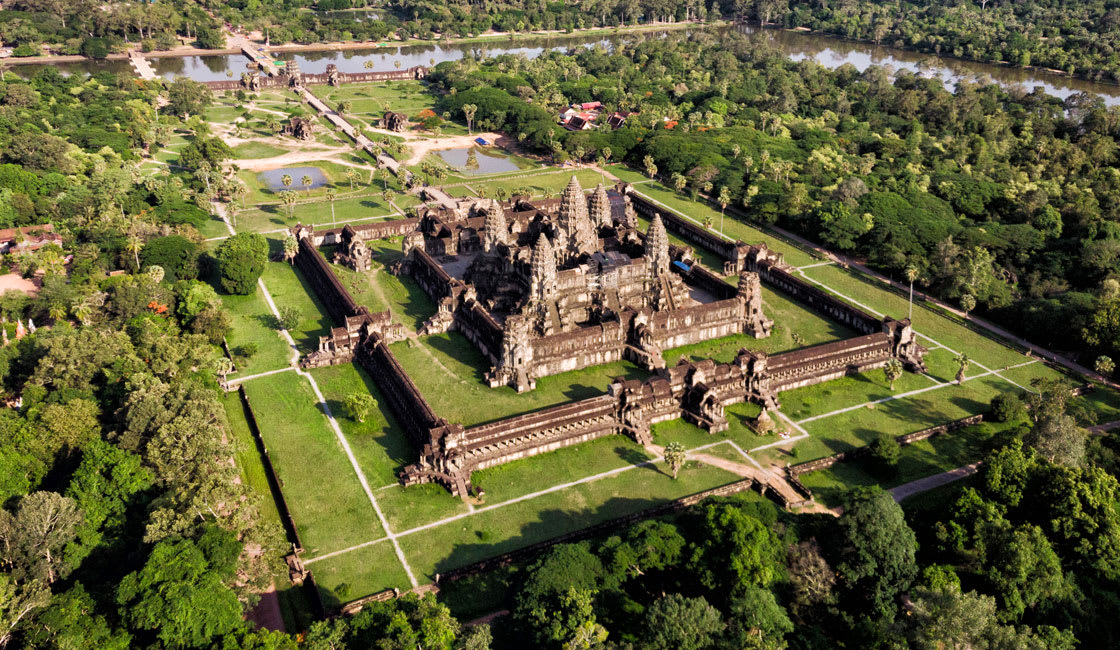
Angkor Wat (meaning “City Temple”) is the most famous, the most magnificent and the largest of all the Angkor temples, and a prime example of classical Khmer design. The structure occupies an enormous site of 494 acres. A huge rectangular moat surrounds the temple, which rises through a series of terraces to the central shrine, towering at a height of 669 feet.
This arrangement reflects the traditional Khmer idea of the temple mountain, in which the temple represents Mount Meru, the home of the gods in Hinduism. The bas-reliefs encircling the temple on the first level depict Hindu epics including the mythical “Churning of the Ocean of Milk”, a legend in which Hindu deities stir vast oceans in order to extract the nectar of immortal life.
The reliefs, including thousands of female dancers, are carved into the wall of the third enclosure of the temple. Angkor Wat was built in the 12th century as a Hindu temple, but later transformed into a place of worship for Buddhists. It is dotted with gorgeous balustrades, galleries, chambers, courtyards, corridors and porches. The legendary sunrise at Angkor Wat is every bit as spectacular as you might expect it to be.
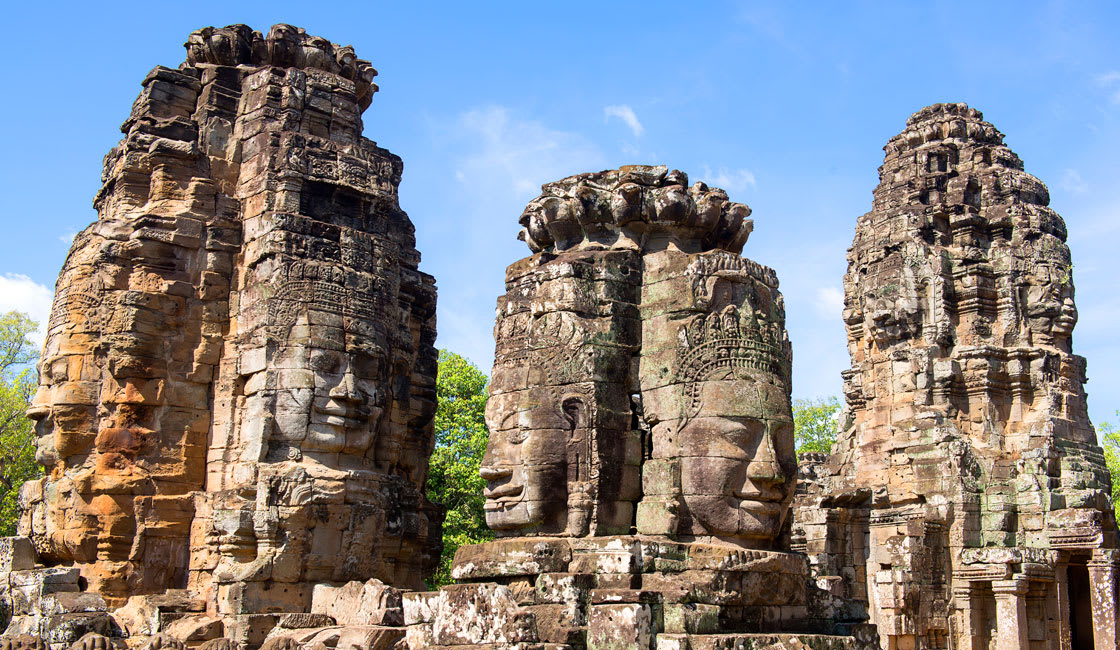
Standing proudly, since 1190 AD, at the exact center of the massive Angkor Thom complex, the magnificent Bayon temple was one of the last temples to be built at Angkor and is famous for its 216 massive stone faces, which look out in all directions. The curious smiling faces, thought by many to be a portrait of King Jayavarman VII himself or a combination of him and Buddha, are an instantly recognizable image of Angkor.
The Bayon rises through three levels to a height of around 140 feet. The outer gallery on the first level is home to some well-preserved bas-reliefs which are thought to depict scenes of everyday life and historical events, featuring everything from armies to acrobats, while the inner gallery on the next higher level depicts mythical figures and stories. The third level is where you will encounter the faces, which surround you. In fact, it is difficult to find a spot where their eyes will not be watching you.
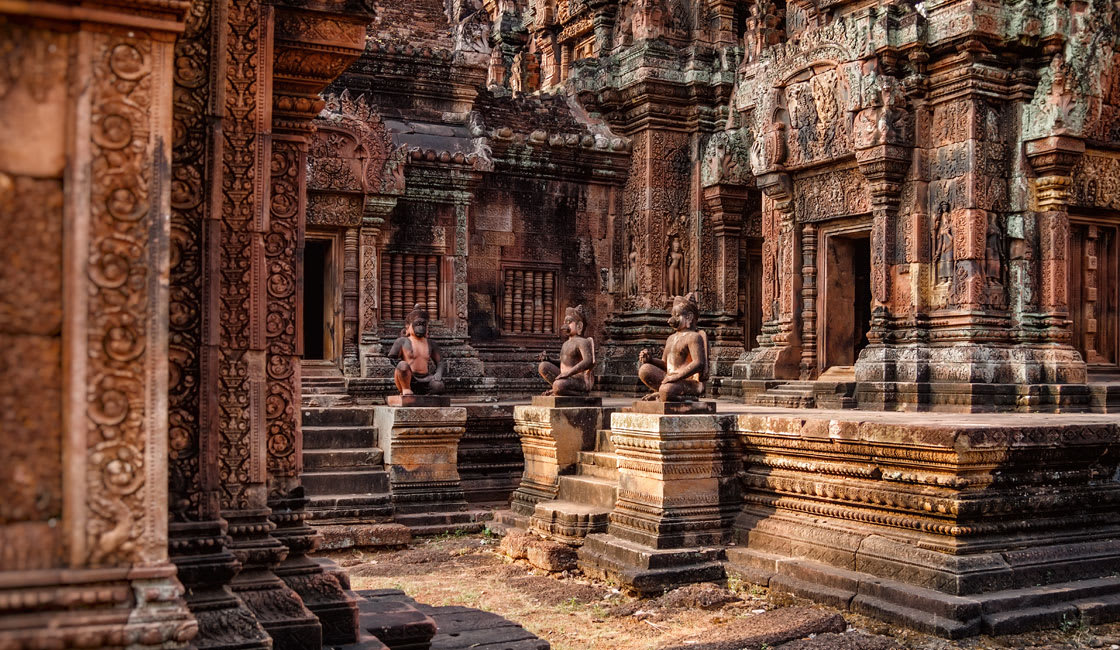
Banteay Srei is small compared to some of the other temples but it should not be overlooked during your visit to Angkor. Built of fine grained, rose-pink sandstone, the temple walls are elaborately decorated with floral motifs and epic Ramayana scenes, making it a jewel of Khmer art. The name means “Citadel of the Women” because the intricate carvings are supposedly too fine for the hand of a man. Aim to arrive here just before sunset to catch the last rays of the sun glowing on the temple facade.
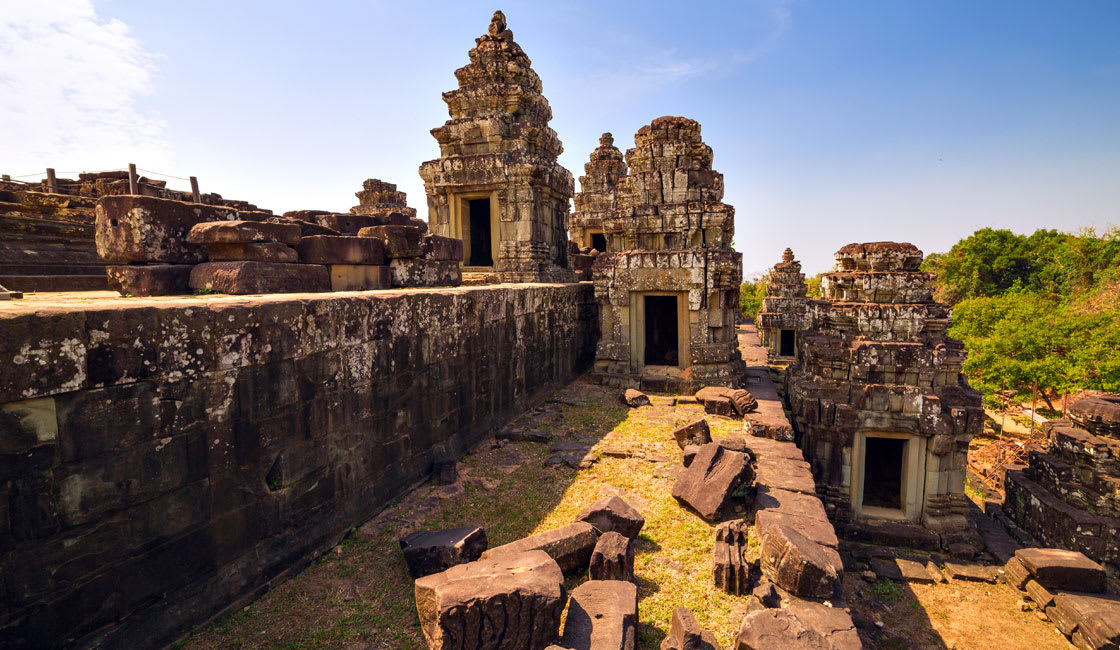
This might not be the most spectacular temple you will see in terms of buildings, but it is historically significant. Built between late ninth and early 10th centuries, it is one of the oldest temples here. The hill-style temple construction represents Mount Meru, home of the Hindu gods. Facing east, it is built in a pyramid form of six tiers. It originally boasted 108 small towers but only a few of these remain. From the top you can enjoy a panoramic view across to Angkor Wat, which also makes it a fabulous spot to watch the sunset.

Ta Prohm is undoubtedly one of the best places to see at Angkor Wat. This evocative and photogenic ruin gained fame as the atmospheric setting for the 2001 action film Tomb Raider, and for once, it is worth every bit of the hype. Gigantic trees and tree roots are intertwined with the crumbling stone structures giving it an eerie quality.
This is a great example of how many of the temples would have looked when they were first rediscovered after having been abandoned after the fall of the Khmer Empire in the 15th century and subsequently swallowed up by the jungle. Ta Prohm is said to be the first built entirely of sandstone and features a five-tiered pyramid with steep staircases on each side. The temple was home to more than 12,500 people, including 18 high priests, while an additional 80,000 Khmers, living in the surrounding villages, were required to maintain the temple.
If Angkor Wat and other temples are a testimony to the genius of the ancient Khmers, Ta Prohm equally reminds us of the humbling power of nature.
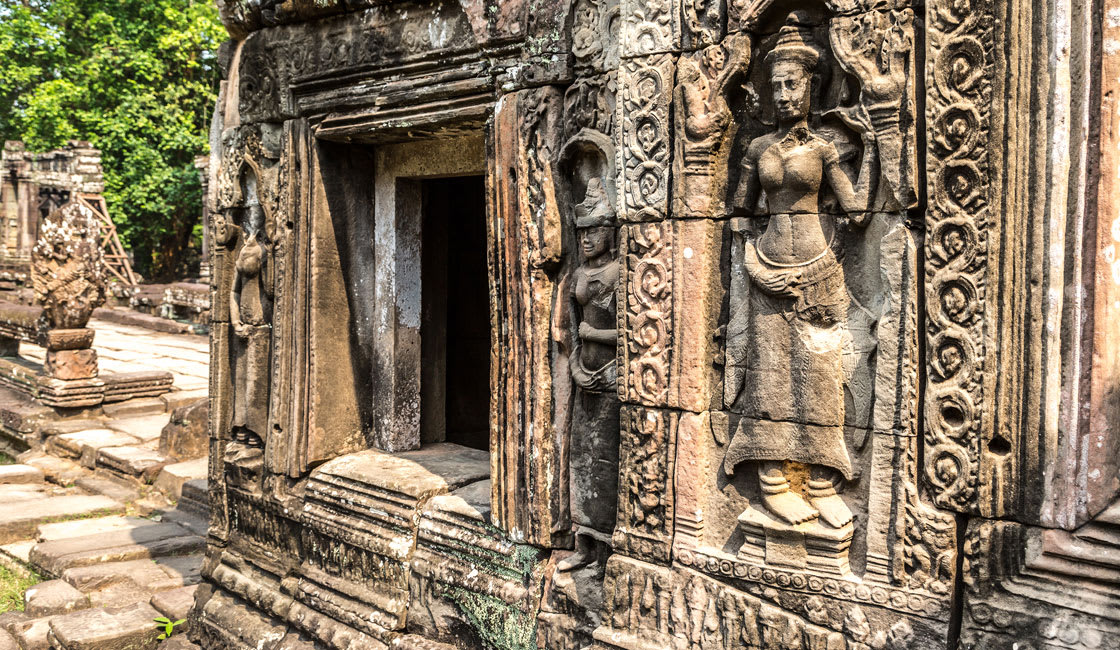
Named the ‘Citadel of Cells’, little is known about this mysterious temple. It is presumed that Banteay Kdei was a Buddhist monastery as hundreds of Buddha statues have been excavated from the site. The temple was probably built in the 12th century, and after the collapse of the Khmer Empire it remained neglected and covered with vegetation for hundreds of years.
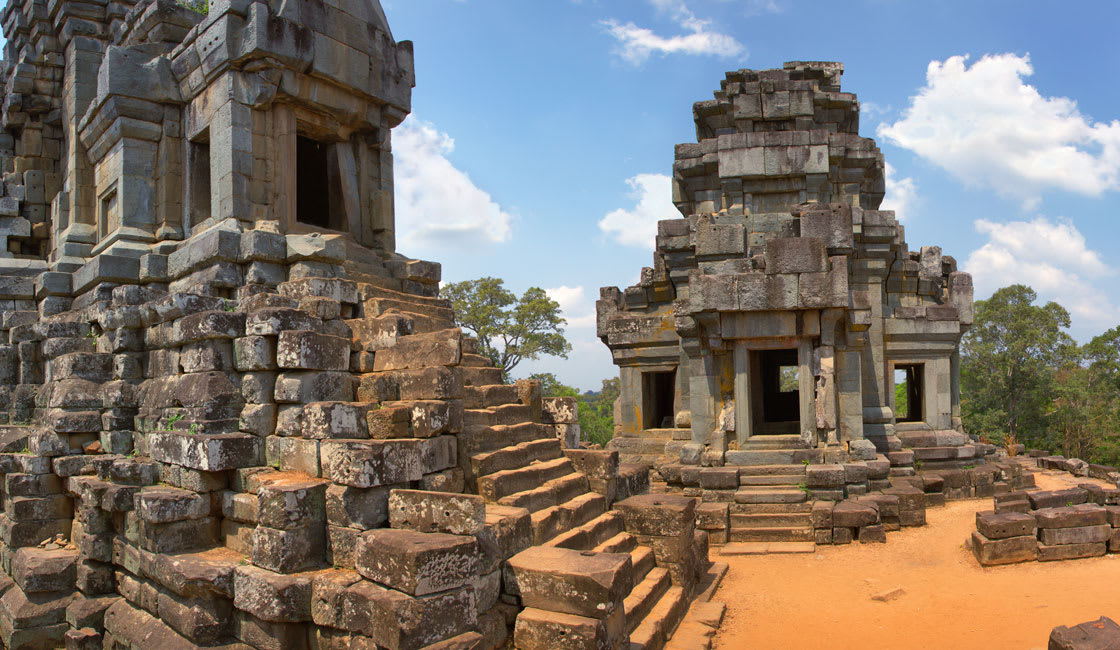
Dedicated to the Hindu god Shiva, Ta Keo was built as the state temple of Jayavarman V, son of Rajendravarman. Legend has it that the temple was struck by lightning during its construction, and all work was abandoned at a stage where the main structure was complete but before any external carvings had been added. Also unique is the fact that Ta Keo is made of green sandstone versus the deeper brown or grayish color of other temples at Angkor. The climb to the top of the temple is very steep, but the view is well worth it.
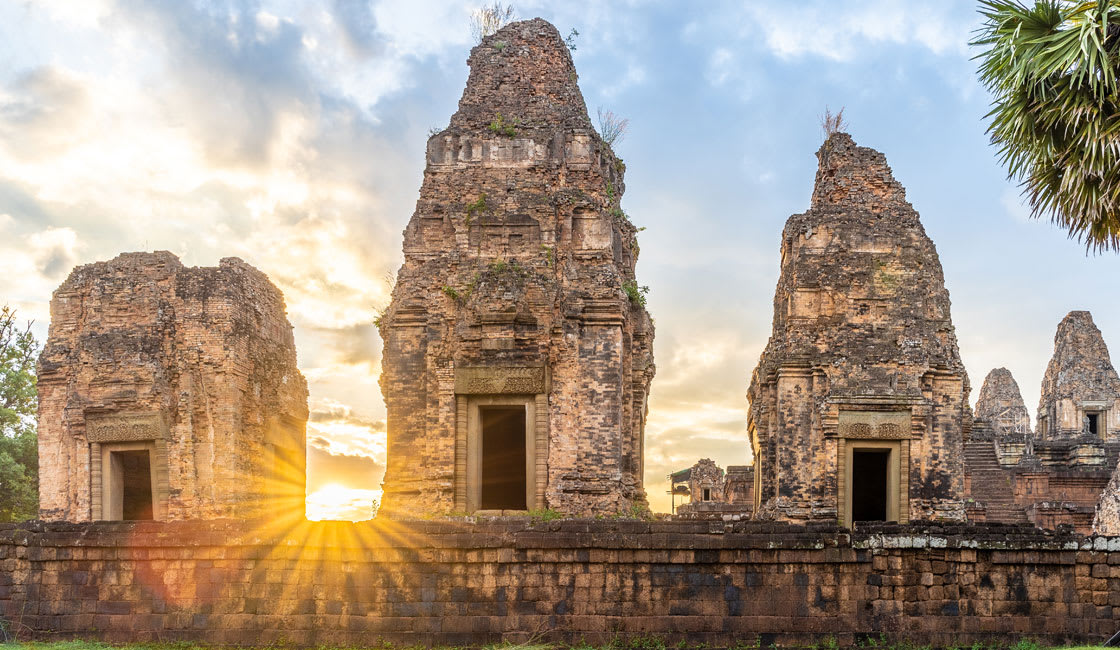
With its three central spires, Pre Rup looks a bit like a mini Angkor Wat. Pre Rup is made of gray sandstone, which is a less durable material than the pink sandstone that characterizes some of the other temples at Angkor. As such, time and weather has not served the temple well and many of the complex carvings and details have been worn away by rain and erosion.
It was built as the state temple of King Rajendravarman in 961 and was dedicated to Shiva, and although it is now a crumbling temple, it is still magnificent in size and structure.
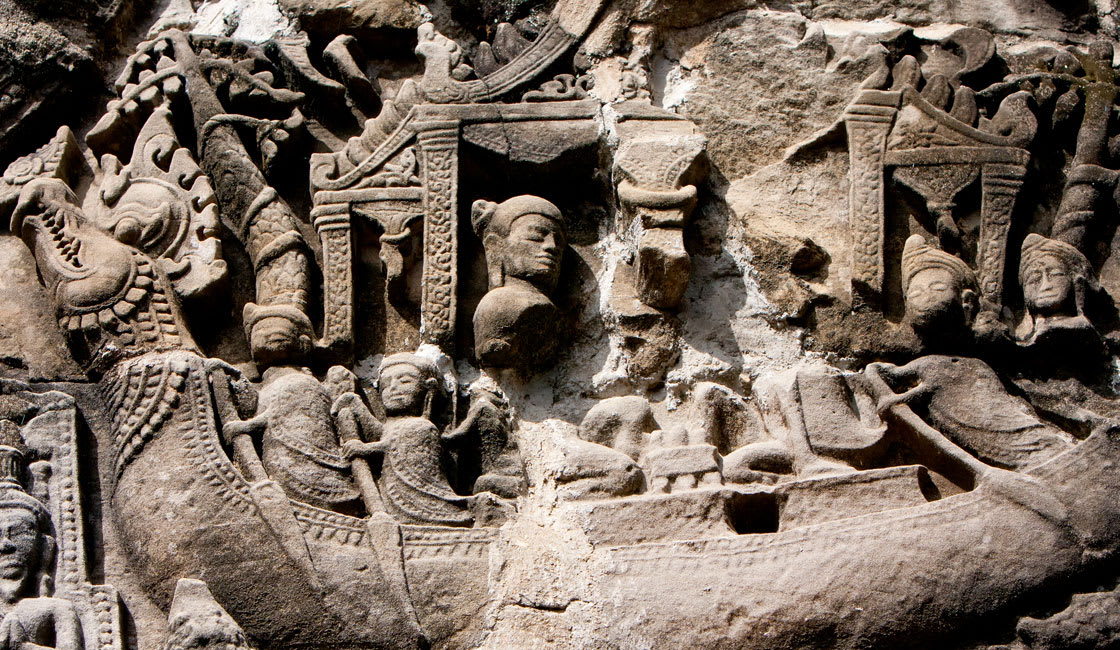
The temple of Preah Khan is one of the largest and most mystical complexes at Angkor. Its majestic statues have been vandalized and disfigured over the years by various religious sects, yet these layers of history lend an impenetrable aura to the temple, which has been left largely unrestored, with numerous trees growing among the ruins.
Preah Khan was built by King Jayavarman VII and is both a Buddhist and Hindu temple. Four ceremonial walkways approach the gates. The eastern entrance is dedicated to Mahayana Buddhism with equal-sized doors. The other principal directions are dedicated to Shiva, Vishnu and Brahma with successively smaller doors, emphasizing the unequal nature of Hinduism.
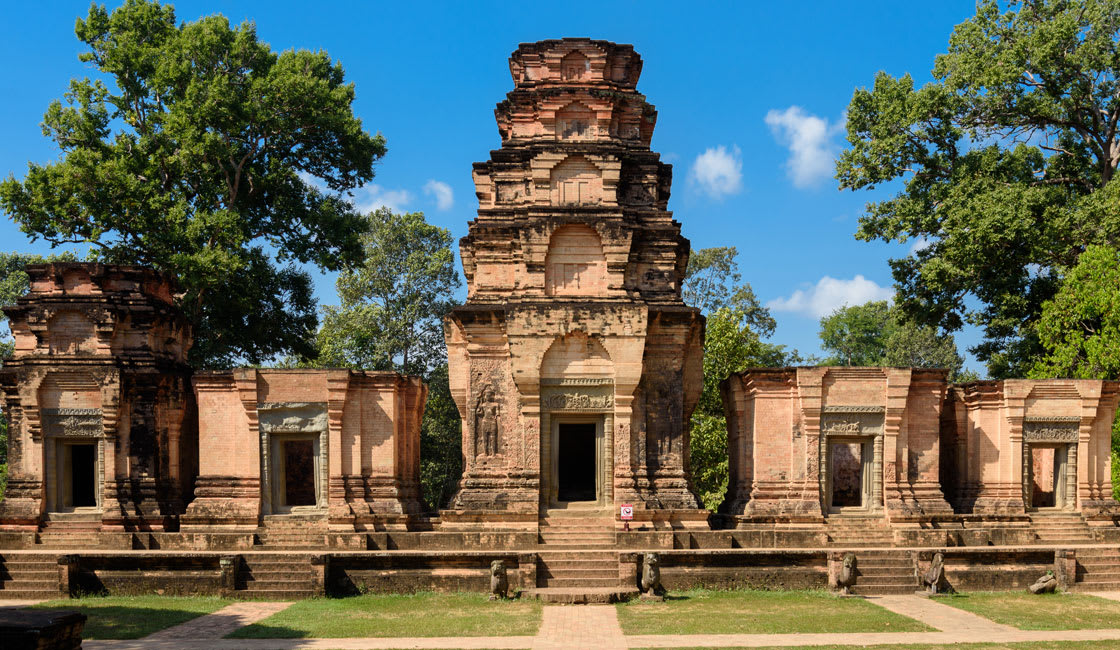
One of the smaller Angkor temples, Prasat Kravan was created in the 10th century and boasts an impressive facade of red-brick symmetrical towers. The bright orange hue of the stone makes this temple a beautiful spot to visit. It was reconstructed by archaeologists in the early 20th century and is the only temple here with brick bas-relief. The temple faces away from the road so make sure you walk around to see the impressive carvings depicting Vishnu inside the towers. They look particularly stunning in the sunshine.

Built in the 12th century, Neak Pean was originally constructed for medicinal purposes. People would come here to bathe in the waters and rebalance themselves, thus curing any diseases. It is the only temple at Angkor that you cannot walk through and explore up close. To get to this small temple you cross a long walkway over a lake, which adds to the rather dramatic setting. What remains of the temple might be a slight anti-climax, but the small island surrounded by water gives it a quite different feel to any of the other Angkor temples.
While Rainforest Cruises aim to provide accurate and up-to-date information, we make no representations as to the accuracy or completeness of any information herein or found by following any link on this site. Rainforest Cruises cannot and will not accept responsibility for any omissions or inaccuracies, or for any consequences arising therefrom, including any losses, injuries, or damages resulting from the display or use of this information.




